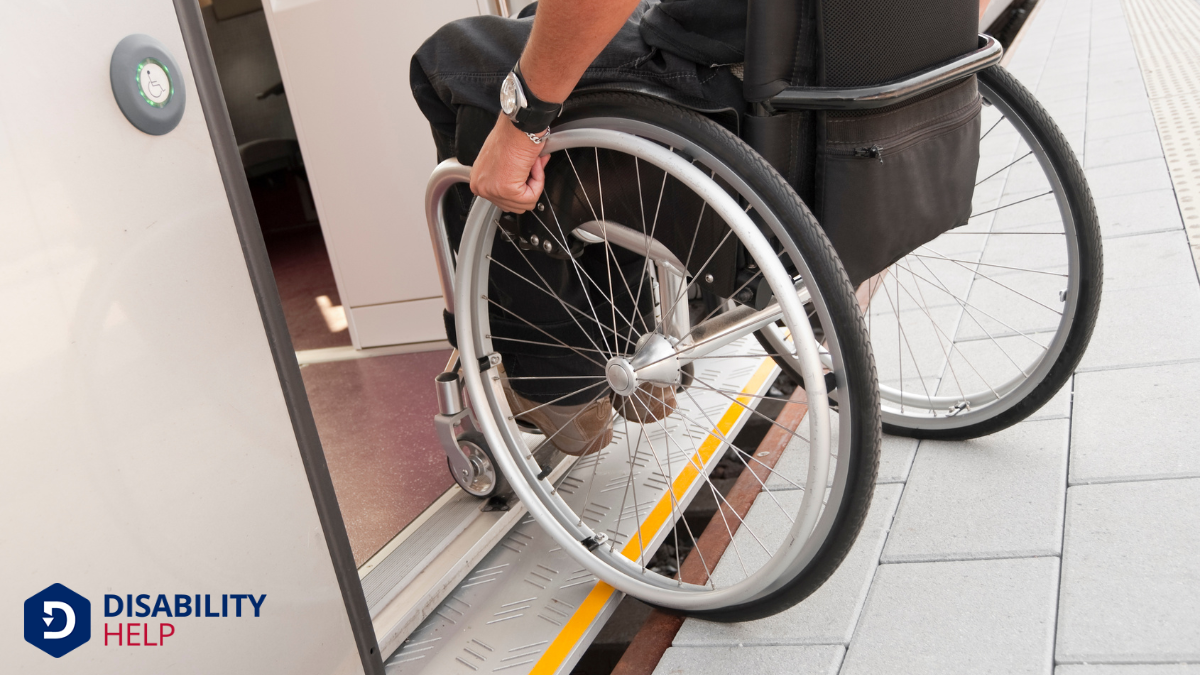As employers, creating inclusive environments for disabled staff involves more than just compliance with laws—it's about fostering a workplace where everyone feels valued and empowered. We need to prioritize open communication and actively listen to the unique needs of our employees. By modifying physical spaces for accessibilityThe design of products, devices, services, or environments to be usable by people with disabilities.... and implementing dynamic accommodationAdjustments or modifications provided to individuals with disabilities to ensure equal access and pa... policies, we can make a real difference. Let's explore how promoting awareness and leveraging technology can further support our inclusive efforts.
Key Takeaways
- Engage in open dialogues to understand and address the unique needs of disabled employees.
- Modify physical workspaces to ensure accessibility for individuals with mobility challenges.
- Implement flexible accommodation policies that adaptA grassroots disability rights organization in the U.S. that focuses on promoting community-based se... to the changing needs of disabled staff.
- Foster a culture of inclusivity through training, awareness, and celebrating diversityThe inclusion of individuals from a wide range of backgrounds, including people with disabilities..
- Leverage technology tools to support communication and accessibility for disabled employees.
Understanding the Needs of Disabled Employees
To truly understand the needs of disabled employees, we must first engage in open and honest communication. It’s essential that we listen actively, fostering an environment where team members feel safe to express their needs and challenges.
By asking thoughtful questions and seeking clarity, we demonstrate our commitment to creating an inclusive workplace.
We should also educate ourselves on the diverse range of disabilities, recognizing that each individual's experience is unique. This understanding helps us build empathyThe ability to understand and share the feelings of another, particularly important in understanding... and tailor our approaches accordingly.
Additionally, we need to encourage feedback regularly. This ongoing dialogue allows us to adapt and improve our support systems.
Together, we can create a culture where every employee feels valued and empowered to contribute their best.
Modifying Physical Workspaces for Accessibility

By understanding the needs of disabled employees, we can now focus on making our physical workspaces more accessible.
Let's consider pathways, doorways, and common areas. We should guarantee they're wide and clear of obstacles to accommodate those using wheelchairs or mobility aidsDevices designed to help individuals move around more easily, such as canes, walkers, or wheelchairs.... Installing ramps and elevators where necessary is vital, as is making sure door handles and switches are within easy reach.
We also need to think about sensory considerations. For employees with visual impairments, tactile indicators and clear signage can be very helpful. Adequate lighting and reducing noise levels can benefit those with sensory sensitivities.
Ultimately, creating an accessible workspace requires collaboration. By actively involving disabled employees in the process, we gain valuable insights and foster an inclusive environment that respects everyone's needs.
Implementing Effective Accommodation Policies
When we talk about implementing effective accommodation policies, it's essential to prioritize open communication and flexibility.
We need to start by engaging in honest conversations with our disabled staff, asking what they need to thrive. By doing so, we can tailor accommodationsModifications or adjustments in healthcare settings to support patients with disabilities. to fit individual requirements, rather than applying a one-size-fits-all approach.
Let’s also remember that accommodation is an ongoing process. Needs might change over time, so regular check-ins can guarantee our policies remain relevant and effective.
We should document and review these accommodations regularly, making sure they align with both employee well-being and business goals. By being proactive and responsive, we demonstrate our commitment to inclusivity, fostering a supportive environment where everyone can contribute meaningfully.
Fostering a Culture of Inclusivity and Awareness
Creating a culture of inclusivity and awareness means recognizing that everyone in the workplace plays an essential role in shaping the organization’s environment.
We must actively engage in open dialogues about disabilities, breaking down barriers that often stem from misunderstandings. By sharing our experiences and listening to others, we can foster empathy and understanding.
Training sessions and workshops can help educate staff about different disabilities, encouraging us to challenge stereotypes and assumptions.
It’s vital that we not only promote inclusivity but also practice it daily by being mindful of our language and actions. Celebrating diversity and acknowledging the unique contributions of disabled colleagues enriches our workplace.
Together, we can create an environment where everyone feels valued and empowered to contribute their best.
Leveraging Technology to Support Inclusivity

Moving forward from fostering a culture of inclusivity, we can enhance our efforts by leveraging technology to support disabled staff effectively.
Technology offers innovative solutions that empower everyone, leveling the playing field and facilitating seamless integration.
- Screen readers: Help visually impaired colleagues by converting text to speech, enabling independent navigation of digital documents.
- Voice recognition software: Allows individuals with mobility challenges to control computers and carry out tasks using their voice.
- Video conferencing tools with captions: Guarantee that meetings are accessible for hearing-impaired team members.
- Adjustable desks and ergonomic tools: Foster comfort and accessibility for those with physical disabilities.
- Communication apps: Use tools designed for neurodiverse team members to enhance collaboration.
Frequently Asked Questions
How Can Employers Address the Mental Health Needs of Disabled Employees?
We must prioritize open communication and provide resources like counselingProfessional guidance to help individuals cope with emotional, mental, or social challenges, particu... or flexible schedules. Encouraging a supportive culture helps us address mental health needs effectively, ensuring our disabled colleagues feel valued and understood in the workplace. Let's act together.
What Are the Best Practices for Remote Work Inclusivity for Disabled Staff?
Let's prioritize accessible technology and flexible schedules to accommodate diverse needs in remote work. Encourage open communication and provide resources for adaptive tools. Together, we'll foster a supportive environment where everyone's contributions are valued and recognized.
How Should Employers Handle Disability Disclosure and Privacy Concerns?
We should respect privacy and guarantee disclosure is voluntary. Let's build trust by fostering an open dialogue, providing clear communication, and safeguarding personal information, guaranteeing everyone feels comfortable and supported without fear of repercussions or judgment.
How Can Companies Measure the Success of Their Inclusivity Initiatives?
We can evaluate inclusivity initiatives by gathering feedback through surveys, tracking retention rates, and monitoring participation in programs. Let’s guarantee transparency and engage in open dialogue, showing our commitment to creating a truly inclusive environment.
What Role Do Employee Resource Groups Play in Supporting Disabled Staff?
We recognize employee resource groups as essential in advocating for disabled staff. They foster community, provide feedback, raise awareness, and guarantee that diverse voices inform policies. Let’s support these groups to enhance inclusivity and accessibility together.
Conclusion
In creating inclusive environments for disabled staff, we must prioritize understanding their needs and guarantee our workplaces are accessible. By implementing dynamic accommodation policies and fostering an inclusive culture through awareness and training, we can challenge stereotypes and promote empathy. Let's embrace technology as a tool to enhance accessibility and support our commitment to inclusivity. Together, we can build a workplace where everyone feels valued, empowered, and able to contribute their best.






